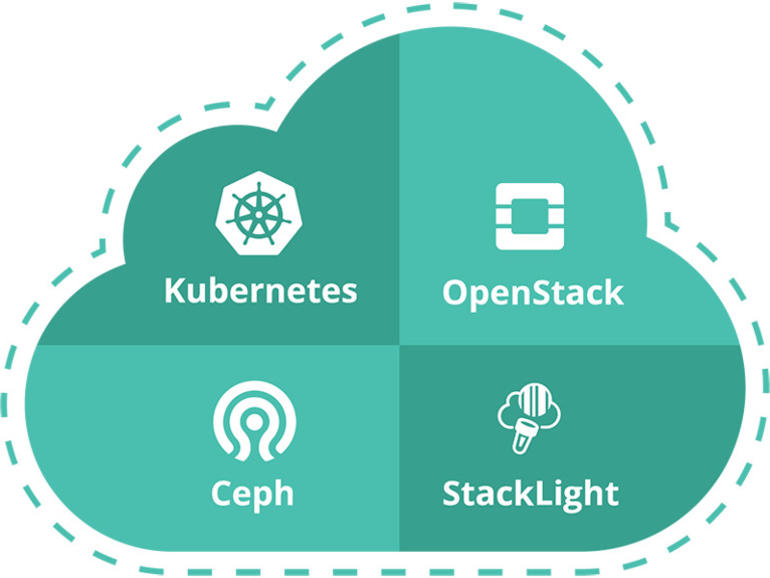Mastering Kubernetes is not easy. Mastering Kubernetes across multiple platforms–VMware Infrastructure as a Service (IaaS) cloud, bare metal, public clouds, and on-premises–is seriously not easy. That’s why Mirantis strives to provide a single enhanced Kubernetes platform, Mirantis Container Cloud (MCC),which provides you with common application programming interfaces (APIs) and developer experiences no matter what platforms you’re using. This new version, which will be released shortly, comes with hundreds of updates, including VMware IaaS support. With it, Mirantis promises you can build and operate container and virtual machine (VM) clouds anywhere you want and have them work smoothly with each other.
According to Mirantis, its “batteries-included” Container Cloud does this by providing a single set of APIs and tools to deploy, manage, and observe secure-by-default, certified, Kubernetes clusters on any infrastructure using a “single pane of glass” interface. The platform is also continuously updated by Mirantis, with zero downtime, so you can stay on top of security issues.
Mirantis outlines the following features:
Build and operate consistent containers and VM clouds anywhere.Observe, scale, and non-disruptively update all from a single pane of glass.Use one set of automation controls, instead of many different forms of automation.Port applications easily from one infrastructure to another, minimizing spend and maximizing performance — and avoiding lock-in.Maximally (and dynamically) utilize existing private clouds to run modern container workloads without complexity.
Besides supporting VMWare Provider, this new release also includes Kubernetes-centric Grafana Dashboards in StackLight. Grafana Dashboards are powerful open-source analytical and visualization tools. You’re given multiple individual panels arranged in a grid. Each individual panel pulls time-series-based data from data sources. These sources include AWS CloudWatch, Microsoft SQL server, Prometheus, MySQL, InfluxDB, and many others. StackLight is Mirantis’s own monitoring, logging, and alerting program for large-scale container and cloud observability. While it can be used with other platforms, it’s heavily optimized for the MCC. On MCC StackLight monitors every service and component in a multi-cloud distributed hierarchy — from top-level MCC manager and Region clusters to Mirantis Kubernetes Engine child clusters. It also now supports VMware Provider.
On bare-metal hardware, MCC now supports multi-clouds as well as multiple network interface cards (NIC)s.
Mirantis also has improved MCC’s cloud security. For example, Mirantis Kubernetes Engine, which is now based on Kubernetes 1.20, provides two-factor authentication (2FA) using a generic time-based one-time password 2FA authenticator, like YubiKey or Google Authenticator, for the second factor.
Mirantis Secure registry also finally includes support for Helm, a Kubernetes package manager. In the latest version, users can store and browse Helm charts, optionally store provenance files, and lint charts for conformance to best practices. The Helm repository and linting functionality are fully accessible via the Mirantis Secure Registry API, and it is even possible to use popular Helm plugins such as ChartMuseum‘s helm-push.
Finally, in order to improve security, the Mirantis Secure Registry also now includes a new feature known as Running Image Enforcement. With this feature, administrators can create policies that stop images from being pulled from the registry when new vulnerabilities are discovered.
“Mirantis Container Cloud makes it easy to deploy and manage production Kubernetes at scale across multiple infrastructures, making multi-cloud operations simple, efficient, and reliable,” said Adam Parco, Mirantis’s VP engineering in a statement. “Users are able to reduce operational overhead and the need for cloud- and platform-specific skills. Container Cloud enables workload and automation portability between on-premises data centers and public clouds — and provides single points of integration — to provide automated cluster provisioning and developer self-service.”
Of course, there are other takes on Kubernetes that offer this basic idea of cross-platform Kubernetes. Red Hat OpenShift springs quickly to mind, But, MCC is worth a look too. Want to know more? You can try MCC for free on AWS with full functionality for up to 3 clusters totaling up to 15 nodes.



